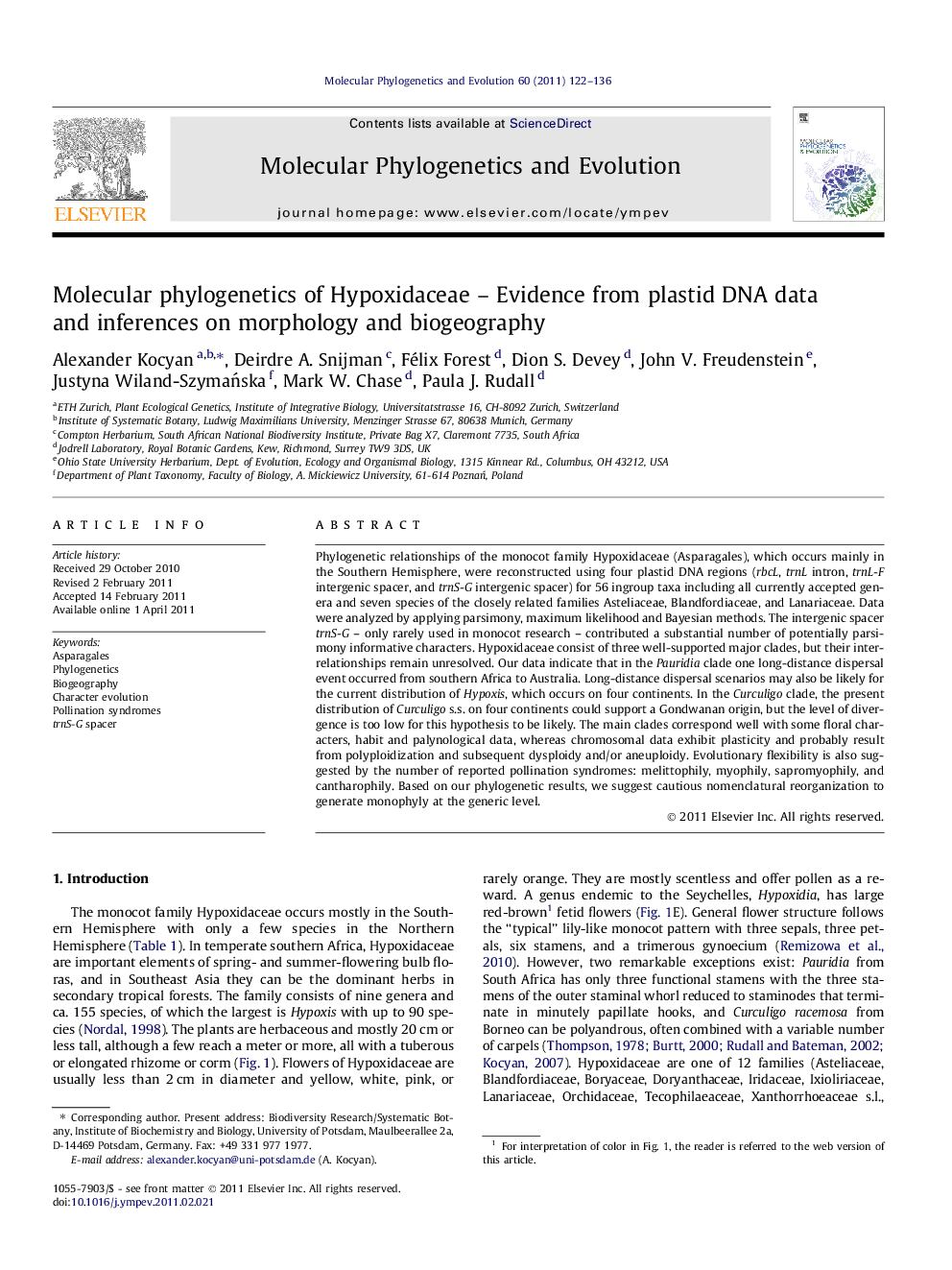| کد مقاله | کد نشریه | سال انتشار | مقاله انگلیسی | نسخه تمام متن |
|---|---|---|---|---|
| 2834193 | 1164298 | 2011 | 15 صفحه PDF | دانلود رایگان |

Phylogenetic relationships of the monocot family Hypoxidaceae (Asparagales), which occurs mainly in the Southern Hemisphere, were reconstructed using four plastid DNA regions (rbcL, trnL intron, trnL-F intergenic spacer, and trnS-G intergenic spacer) for 56 ingroup taxa including all currently accepted genera and seven species of the closely related families Asteliaceae, Blandfordiaceae, and Lanariaceae. Data were analyzed by applying parsimony, maximum likelihood and Bayesian methods. The intergenic spacer trnS-G – only rarely used in monocot research – contributed a substantial number of potentially parsimony informative characters. Hypoxidaceae consist of three well-supported major clades, but their interrelationships remain unresolved. Our data indicate that in the Pauridia clade one long-distance dispersal event occurred from southern Africa to Australia. Long-distance dispersal scenarios may also be likely for the current distribution of Hypoxis, which occurs on four continents. In the Curculigo clade, the present distribution of Curculigo s.s. on four continents could support a Gondwanan origin, but the level of divergence is too low for this hypothesis to be likely. The main clades correspond well with some floral characters, habit and palynological data, whereas chromosomal data exhibit plasticity and probably result from polyploidization and subsequent dysploidy and/or aneuploidy. Evolutionary flexibility is also suggested by the number of reported pollination syndromes: melittophily, myophily, sapromyophily, and cantharophily. Based on our phylogenetic results, we suggest cautious nomenclatural reorganization to generate monophyly at the generic level.
Figure optionsDownload as PowerPoint slideHighlights
► Plastid sequences support three main clades within Hypoxidaceae.
► Long-distance dispersal between southern Africa and Australia of Spiloxene.
► Parallel evolution of ovary characters.
Journal: Molecular Phylogenetics and Evolution - Volume 60, Issue 1, July 2011, Pages 122–136